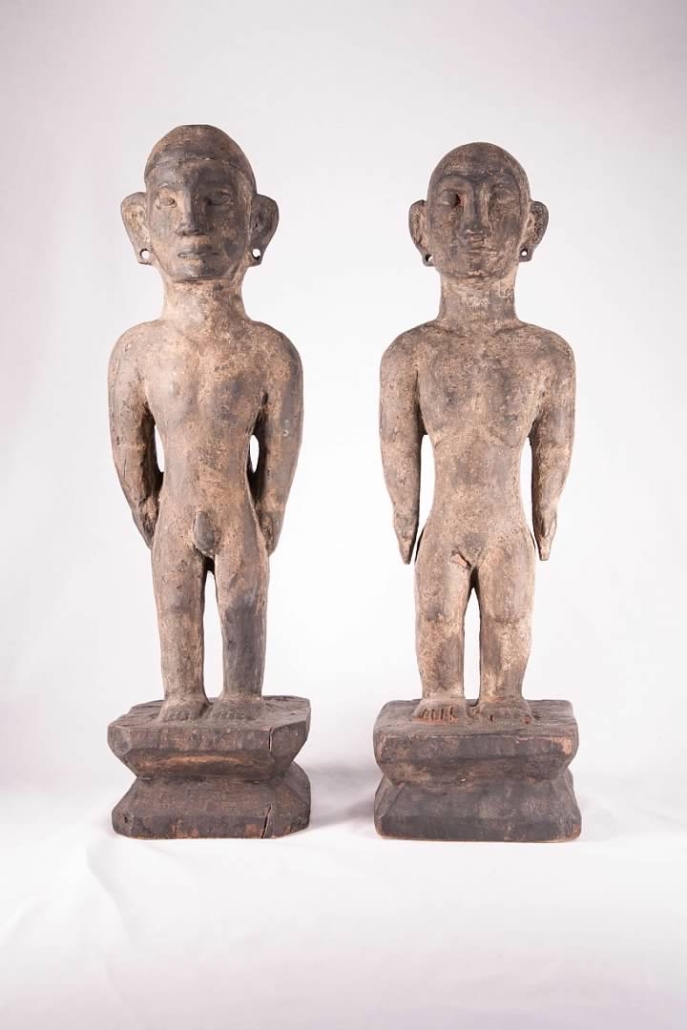Bu’lul. An anthropomorphic wooden sculpture, commonly described as Ifugao rice guardians or rice gods. Perhaps the most ubiquitous Ifugao icon used in all rice rituals. A bu’lul is placed in the alang (rice granaries) to guard the stored grains. They invoked when seeking plentiful rice harvest. They are also regarded as representations of ancestors who facilitate divine interventions in the living world.
Perhaps the most sought after Ifugao item by collectors, there are perhaps more bu’lul outside of Ifugao. Culture change and the incorporation of the Ifugao in the market economy have forced families to sell their bu’lul, which have been inherited from previous generations. Recent discussions on the ethics of collection and repatriation have underscored the need for descendant communities to reacquire their heritage. This facilitates heritage (re)discovery and the formation of a stronger ethnic identity.
Image above: A pair of bu’lul from the Finnegan collection. Photo by Jacob Maentz.


